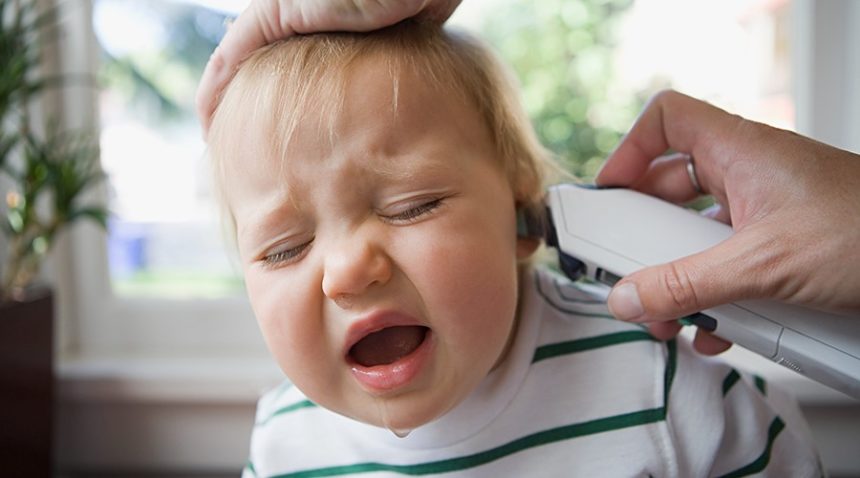Ear infections are a common winter ailment and tend to occur more often in children than adults. Most often caused by a bacterial infection, an ear infection usually occurs after your child has a sore throat, cold or other upper respiratory infection.
Here are answers to common questions about ear infections.
What triggers ear infections?
Inflammation and infection of the middle ear is the most common type of ear infection. Medically referred to as acute otitis media, a middle ear infection is typically short in duration, yet painful, and often seen in babies and young children. It occurs due to fluid buildup behind the eardrum when the Eustachian tube, which connects the middle of each ear to the back of the throat, becomes blocked. These passages are shorter and more horizontal in young children, making fluid drainage more difficult. Fluid trapped in the ear is an ideal place for bacteria to grow. Also, children’s immune systems aren’t entirely developed, making them more prone to infection.
Contributing factors to the development of ear infections include:
- Colds and sinus infections
- Allergies
- Mucus and saliva buildup during teething
- Infected adenoids
- Other irritants, including secondhand tobacco smoke
What are symptoms of an ear infection?
Babies and young children may not be able to tell you they’re suffering from ear pain, but here are some signs to look for:
- Rubbing or tugging the ear
- Fever
- Irritability and more frequent crying
- Restless sleep
- Decreased appetite
- Clear fluid draining from the ear
These symptoms usually pop up two to seven days after the start of a cold or upper respiratory infection.
How are ear infections treated?
Many ear infections will heal without treatment; however, a visit to your child’s pediatrician can help to determine the severity of the infection and outline a treatment. Rather than over-prescribing antibiotics for ear infections, many doctors may first advise a watch-and-see approach along with a pain reliever to ease your child’s pain.
You can also help reduce discomfort by:
- Placing a warm compress over the ear
- Encouraging plenty of rest to help the body fight infection
- Offering babies and young children plenty of fluids; chewing gum may help older children
If an ear infection lingers longer than three days, your doctor may prescribe an antibiotic.
“If their fever lasts three to four days, and they are not eating and drinking and are showing symptoms, they need to be seen,” says UNC Health pediatrician Ricardo Baler, MD. “After two to three days on the antibiotic, kids usually start to feel better. If not and the patient still has a fever, we sometimes need to switch to stronger antibiotics.”
And if you notice pus or blood draining from your child’s ear, call your child’s doctor. These may be indications of a ruptured eardrum.
Worried your child may have an ear infection? Talk to your doctor. If you need a doctor, find one near you.

